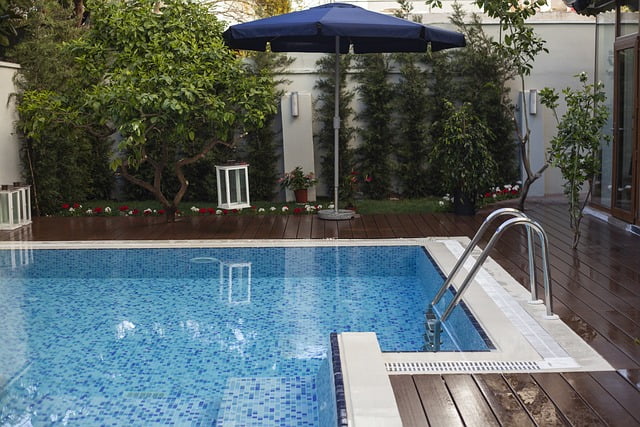5 Tips for Swimming Pool Maintenance
It’s time to start your swimming pool maintenance schedule as summer approaches. Most people’s summer bucket lists include relaxing in the pool to cool off. Below, we list a few tips to assist you with the maintenance of your pool.
Clean your swimming pool to remove debris and dirt.
Even though it might seem obvious, cleaning your pool regularly will make a big difference. Maintaining a clean pool surface will keep you safe from infection from a sanitary standpoint. Pool vacuums function very similarly to indoor carpet and hardwood vacuums. Similar to how you clean your house, you can quickly and easily remove debris and algae from your pool by vacuuming.
Online specialists advise that you clean your pool thoroughly at least once per week. They advise brushing your pool’s walls, steps, and floors to get rid of dirt and debris in addition to vacuuming, and skimming the water’s surface and pool floor to get rid of debris like leaves.

Cleaning of swimming pool filters.
The filter in your pool is in charge of clearing the water of impurities like dirt and leaves. Typically, cleaning a pool involves turning off the filter, removing the filter cap from the pool deck, lifting out the filter basket, and clearing out any debris before replacing everything. It’s best to empty your filter basket once a week at the very least.
Additionally, you should backwash the pipes that your filter system uses once a month to clean them out. Set your filter to “backwash,” take out the leaf basket, and clean it out to accomplish this. When the waste pipe begins to eject clear water, turn on your pump and let it run for a while. One more thing to keep in mind when switching the filter on and off: Doing so too frequently can result in cracked mechanics. Your filter should be set to run for at least six hours each day.
Maintaining and checking the water level.
During the swimming season, a lot of water will evaporate and be lost due to normal wear and tear from swimming, splashing, and entering and leaving the pool. Checking the water level is a good idea whenever you use your skimmer to remove debris throughout the week. Make sure it doesn’t go below the skimmer’s level; otherwise, the pump might get hurt. Use a garden hose to raise the water level to a safe level if it is low.
Be careful not to leave the pool empty for an extended period of time if you drain it to perform maintenance or after the swimming season has ended. The weight of the water counteracts forces from the ground pressing up against the pool from below.
Too much water can also be a problem. The skimmer door may not function properly due to high water levels.
Examine Chemistry Weekly
Another best practice for pool care is routine water testing. Water from the surface can be collected as a sample, and it can be tested in an hour.
Use a testing kit once per week to check the chemistry of the water in your pool. The majority of kits use a color-changing system to identify the chemical balance of the water. The ideal pH range is between 7.2 and 7.8, and the chlorine concentration should be 1.0 ppm (parts per million).

To remove buildup, sweep the floor and walls.
If you don’t keep up with routine brushing, algae, mineral deposits, oils, and other sediments can accumulate over time in your pool and leave a film on the walls and floor.
It’s easy to complete. Simply take a pool brush and scrub the wall, floor, and steps of the pool thoroughly before moving on to the main drain.
It is ideal to carry this out at least once per week. It is generally a good idea to brush your pool after applying any chemical treatments. This can aid in their quick dissolution and keep them from etching your pool’s surface.
